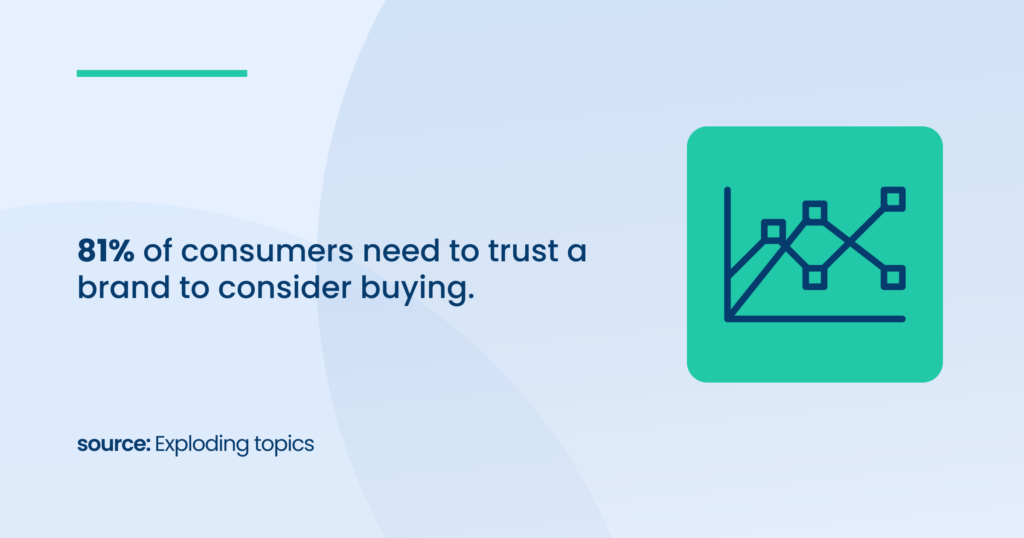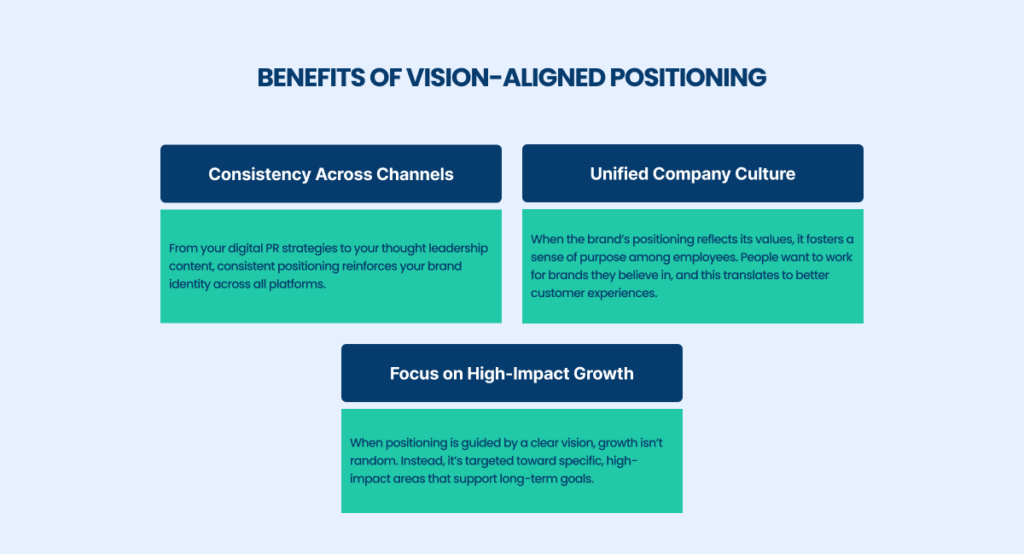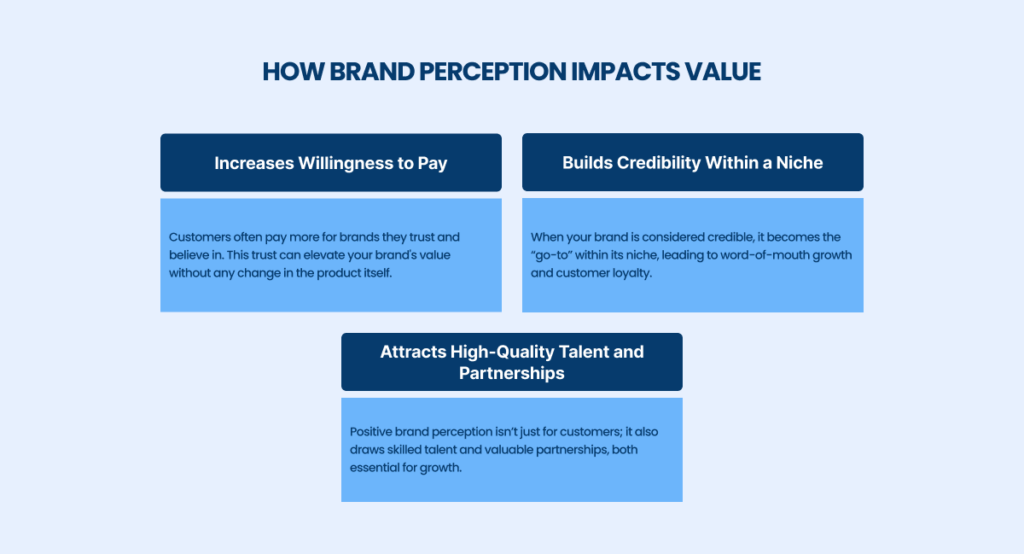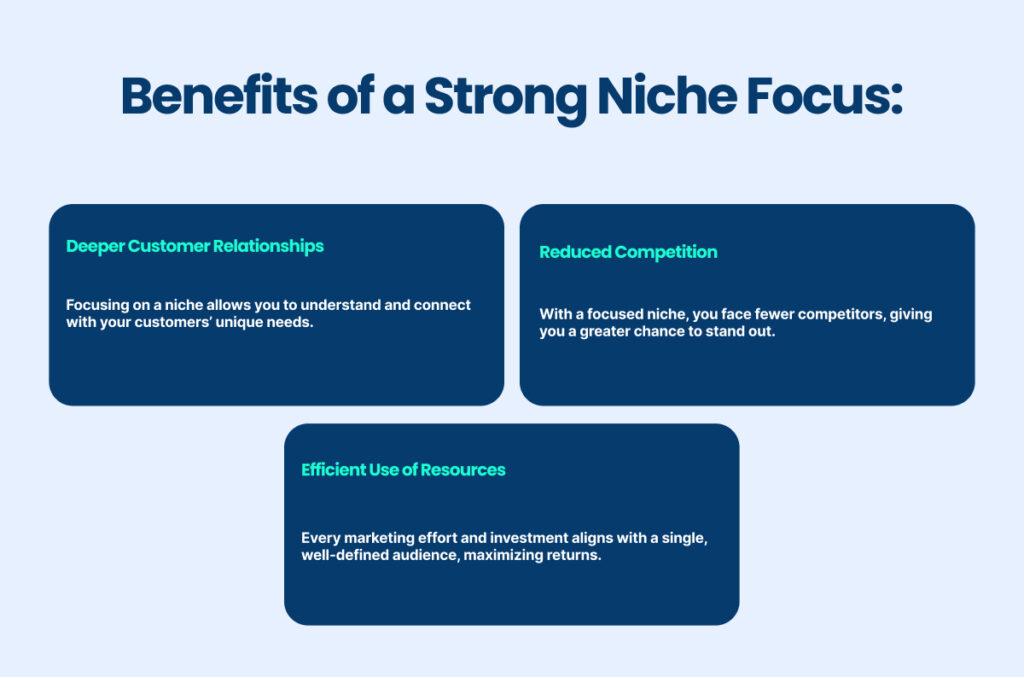Imagine walking into a crowded marketplace.
Every brand is shouting, striving for attention, all claiming to be the best.
But one brand stands out quietly—it doesn’t need to shout because it’s already known, trusted, and sought after. That’s the power of strategic brand positioning.

Strategic brand positioning defines exactly who you are and who you’re for.
It’s where a professional Thought Leadership Agency creates your brand’s story, values, and promises to align perfectly with your audience’s needs and desires.
This blog will explore the ins and outs of strategic brand positioning.
Why Strategic Brand Positioning is a CEO’s Best Investment
In a marketplace saturated with competition, where every brand offers similar products and services, it’s easy to get lost in the noise.
That’s where strategic brand positioning comes into play—it’s not just a buzzword but a game-changing strategy that can transform a business from one of many to one that stands out.
Gain a Competitive Edge that Can’t Be Ignored
Strategic brand positioning creates a competitive edge that’s hard to replicate.
When your brand has a well-defined position in the market, you’re not just another option; you’re the option for your specific audience. This edge stems from more than product quality—it’s about how your brand is perceived, remembered, and trusted by your audience.
How Strategic Positioning Does This:
- Differentiation: A well-positioned brand communicates why it’s different and better than others. This differentiation makes it harder for competitors to lure your customers away.
- Relevance: With the right brand positioning strategies, you’re always in tune with your customers’ evolving needs, ensuring your brand stays relevant in a changing market.
- Trust: When customers repeatedly experience consistency and reliability from a brand, trust grows. And trust isn’t easily swayed by competitors offering lower prices or short-term deals.
Build a Brand that Reflects Your Vision and Values
Strategic brand positioning is a CEO’s tool to align every part of the business with its core vision and values.
When positioning is done right, it’s a magnet, pulling every aspect of the company—culture, product development, customer service—into alignment.
This not only helps the brand grow but also helps everyone in the organization see the bigger picture, keeping them motivated and inspired.

Pro Tip: As CEO, communicating your brand’s vision through regular thought leadership strategies—like interviews, keynote speeches, and content that showcases your brand’s unique perspective—reinforces your positioning and builds trust with both customers and employees.
The Power of Market Perception – It’s Not Just About What You Do
When it comes to your brand’s value and credibility, perception is everything. You may have the best product in your industry or deliver top-notch service, but without a positive market perception, even the most remarkable offerings can struggle.
Understanding the power of market perception and how it can build a “halo effect” around your brand gives you a strategic advantage, especially within niche markets.
Brand Perception: The Real Value Driver
In a world crowded with choices, how people perceive your brand becomes your competitive edge.
Brand perception is the lens through which customers, competitors, and industry experts view your brand’s value. It’s built on everything from customer experiences to how well you communicate your expertise.
In niche markets, where competition can be intense yet specialized, perception can even outweigh product features.

The Halo Effect: Amplifying Your Brand’s Reach and Influence
The “halo effect” isn’t just a marketing term; it’s the phenomenon where one positive impression of a brand extends to other areas.
For example, if customers associate your brand with quality in one product category, they’re more likely to assume the same quality applies across all offerings.
In niche markets, where your reputation is even more influential, the halo effect is a powerful ally in building credibility and broadening influence.
Why the Halo Effect Matters in Niche Markets:
- Enhances Cross-Product Trust: Customers are more inclined to try new products or services if they already trust your brand in a specific area. This is essential for niche brands looking to expand into adjacent areas.
- Strengthens Your Niche Positioning: A strong halo effect reinforces your brand’s authority within a niche, making it challenging for competitors to compete without matching the same level of trust.
- Reduces Customer Acquisition Costs: When customers have a positive perception of your brand, they’re more likely to choose your products or services without extensive persuasion, reducing the cost of marketing and acquisition.
Did You Know? According to Nielsen, 92% of consumers trust recommendations from people they know, showing how the halo effect can influence both word-of-mouth and loyalty within a niche.
Niche Doesn’t Mean Small – The Hidden Potential of Focused Growth
When people hear “niche,” they often think “small.” But in reality, a well-defined niche can hold huge growth potential.
For CEOs and business owners, focusing on a specific market doesn’t mean limiting your opportunities. Some of the most successful companies have made it big by mastering their niche.
Strategic brand positioning in niche markets can reveal surprising, scalable opportunities that competitors may overlook.
Niche Markets Aren’t Small – They’re Specific
In business, “niche” is not synonymous with “tiny.” Instead, it’s about a laser-focused approach to serving a distinct group with specific needs.
A niche market allows you to become the go-to choice, positioning your brand as an expert and leader in that space.

Discovering the Hidden Growth Potential in Niche Markets
While a niche may seem small, many offer scalable growth as you deepen your impact, refine your offerings, and expand thoughtfully.
- Explore Adjacent Needs: Customers in niche markets often have related needs you can address, creating opportunities for additional products or services.
Example: If you specialize in eco-friendly packaging for small businesses, consider expanding to offer consulting services on sustainability practices or waste reduction.
- Invest in Thought Leadership: In niche markets, customers value expertise and trustworthiness.
Types of thought leadership content like case studies, industry insights, and expert articles can position your brand as a knowledge leader.
- Use Digital PR Strategies to Expand Reach: PR isn’t just for big brands; it’s an excellent tool for niche markets.
Sharing your unique story, success, or innovation through digital PR strategies helps grow awareness and credibility beyond your immediate customer base.
- Leverage the “Halo Effect”: Building strong brand perception in one area can create a positive association in other related areas, making it easier to expand your influence.
For example, customers who trust your brand’s quality in one product category may be eager to try others.
- Target Cross-Sector Opportunities: Some niches have applications across different industries, opening the door for expansion without losing focus.
For instance, project management tools for tech companies might also be valuable for healthcare organizations, allowing for growth within your specific expertise.
Did You Know? Research shows that niche brands often achieve higher customer loyalty rates as they meet specific, often underserved needs.
Scaling a Niche Doesn’t Mean Losing Focus
Scaling a niche brand isn’t about expanding into unrelated areas. Instead, it’s about deepening your focus and growing within your specific market.
With a defined niche, growth can look different, focusing on creating deeper customer relationships, adding new but relevant offerings, and leveraging technology to reach a broader but still targeted audience.
Key Steps to Scale Within Your Niche:
- Enhance Customer Experience: Make every interaction with your brand memorable, valuable, and authentic. In niche markets, customer experience can set you apart.
- Stay Adaptable: Watch for changes in customer needs, industry trends, and technology to evolve alongside your niche.
- Build a Strong Community: Create spaces, such as forums, social media groups, or webinars, where your niche customers can connect and engage with your brand and each other.
Remember: Focused growth means serving your customers better, not necessarily branching out into new territories. This is how niche brands maintain their credibility and drive long-term success.
How to Cultivate a Unique Value Proposition That Stands Out
Your unique value proposition (UVP) is the core promise your brand makes to customers.
It’s what sets you apart from others, even those in the same market. But creating a compelling UVP requires more than just saying you’re the best.
It’s about aligning your strengths with what matters most to your customers and positioning your brand as the clear choice within your niche.
What Makes a Strong Value Proposition?
A powerful UVP directly addresses customer needs while highlighting your brand’s distinct advantages. For business owners and CEOs, the UVP is more than a tagline—it’s the foundation of your strategic brand positioning. Here’s what it should do:
- Resonate with Customer Needs: Address a specific pain point or desire of your target audience.
- Differentiate Your Brand: Highlight what you offer that others can’t easily replicate.
- Demonstrate Clear Benefits: Make what customers gain by choosing your brand obvious.
Pro Tip: Use customer insights, market research, and competitor analysis to uncover what customers truly care about in your niche.
Steps to Creating a UVP That Speaks to Your Audience
1. Understand Your Customer’s Core Problem
Begin with a clear understanding of your target audience’s issues or challenges. The better you understand their pain points, the more effectively you can communicate how your brand solves them.
Example: If you’re in a niche healthcare market, your UVP could address concerns about privacy, cost, or ease of access.
2. Identify What Sets You Apart
Next, identify the unique attributes of your brand.
This could be a specific expertise, innovative process, or values that resonate with customers.
Avoid generic claims like “high quality” or “best service” and focus on specifics.
- Examples of Differentiators:
- Specialized knowledge or skills (e.g., “Certified in eco-friendly manufacturing”).
- Advanced technology or innovation (e.g., “Proprietary software for faster, personalized service”).
- Unique brand story or values (e.g., “100% family-owned and operated”).
3. Craft the Message in Simple, Impactful Language
Keep it straightforward and clear. Avoid industry jargon, and ensure that anyone—even someone unfamiliar with your niche—can understand the benefits you offer.
Did You Know? Research suggests that customers form first impressions of brands in less than 10 seconds, so clarity is key.
4. Test and Refine Based on Customer Feedback
Once you have a draft UVP, get feedback from customers or prospects. Testing can reveal whether the message is clear, relatable, and convincing. This iterative process ensures that your UVP resonates with real customer needs.
Why a UVP is Essential for Brand Positioning in Niche Markets
For niche markets, a UVP is a beacon that attracts the right customers while filtering out those who aren’t a fit. It’s a strategic advantage that supports brand credibility and fosters loyalty.
- Aligns with Brand Storytelling Techniques: A UVP that��’s woven into your brand storytelling reinforces your brand’s identity and values in an authentic way.
- Supports Thought Leadership Strategies: A clear UVP establishes your brand as a leader in your niche, making it easier to share expertise, insights, and solutions that align with your customers’ needs.
- Drives Focused Growth: A compelling UVP helps you stay true to your niche, focusing growth efforts on areas that align with your brand’s strengths and customer expectations.
Insight: Brands with a strong UVP can often command higher prices and build more loyal customer bases, as they’re perceived as the best solution for specific needs.
Crafting Your Brand Story: From Niche to Necessary
A well-crafted brand story isn’t just a narrative—it’s a bridge that connects your niche brand to a wider audience and demonstrates why your brand is more than just an option.
How Storytelling Elevates a Brand from Niche to Necessity
Brand storytelling has the unique ability to position a niche brand as essential in the eyes of consumers.
- Builds Brand Recall: Stories are memorable and allow customers to connect emotionally with your brand, making it easier for them to remember you when purchasing.
- Fosters Trust and Loyalty: A transparent story that shares your journey builds a loyal customer base that aligns with your values.
- Positions Your Brand as a Thought Leader: Thought leadership skills like storytelling help establish your brand as an authority in your niche, which can shift consumer perception from “nice to have” to “must-have.”
Fact: Brands with strong storytelling elements can see up to 15% higher brand loyalty. Customers are drawn to brands that feel personal and genuine.
The Art of “Less is More” in Brand Positioning
When it comes to brand positioning, sometimes less truly is more. In a crowded market, simplicity can be a brand’s most powerful asset.
By focusing on core strengths and values, you can build a brand that resonates clearly and leaves a lasting impression. For CEOs and business owners, mastering this “less is more” approach can transform how your brand is perceived.
Key Steps to Simplify Brand Positioning
Simplification doesn’t mean stripping away your brand’s value; it’s about honing in on what makes you unique and presenting it in a way that resonates.
- Identify Core Strengths and Unique Value
Consider what truly sets your brand apart. Is it your product quality? Exceptional customer service? Thought leadership strategies in your niche? Focus on these core strengths.
- Trim the Unnecessary
Avoid trying to be everything to everyone. Focus on your core offering and cut back on secondary messages or products that might dilute your brand.
- Refine Your Visual Identity
Simplification should apply to your visual branding as well. A clean, cohesive design can make a brand feel more approachable and memorable.
- Example: Companies like Slack and Basecamp have simple, straightforward designs that reinforce their brand message of productivity and ease.
- Develop a Strong Value Proposition
Strategic brand positioning should revolve around a single, compelling value proposition. Identify the specific value you offer to your niche audience and make that the focal point of your positioning.
- Consistent Messaging Across All Platforms
Your brand message should be consistent across every touchpoint, from your website to social media to customer service interactions. Consistency reinforces simplicity, creating a unified, strong brand image.
- Digital PR Strategy Tip: Use digital PR strategies to share your focused brand message on multiple channels, building a cohesive, recognizable brand identity.
Final Thoughts: Owning Your Niche, One Product at a Time
In strategic brand positioning, success isn’t just about standing out—it’s about standing for something. When you align your brand’s purpose with a clear, focused position, you create a lasting impact that resonates beyond any marketing message.
Indeed, [A] Growth Agency will be the implementer. Our experienced team believes in building lasting partnerships for lasting success. We believe in the power of data to inform and drive every strategy, ensuring our actions are as effective as they are innovative.
Excellence is our standard. We cultivate a team of ‘A players’ – top-tier talents who bring passion and expertise to every challenge.
We’re not just about driving results; we’re about building futures.

